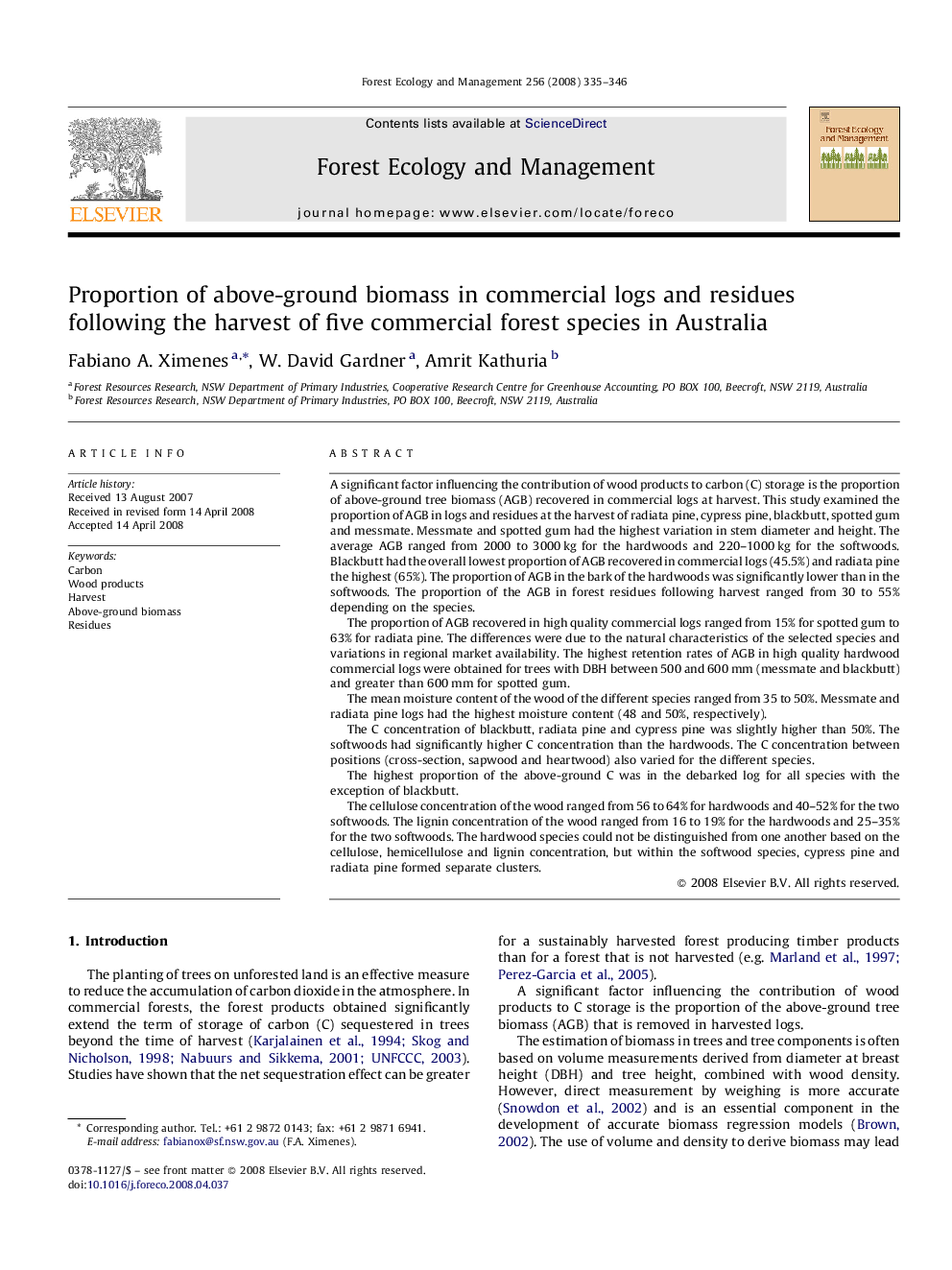| کد مقاله | کد نشریه | سال انتشار | مقاله انگلیسی | نسخه تمام متن |
|---|---|---|---|---|
| 88892 | 159325 | 2008 | 12 صفحه PDF | دانلود رایگان |

A significant factor influencing the contribution of wood products to carbon (C) storage is the proportion of above-ground tree biomass (AGB) recovered in commercial logs at harvest. This study examined the proportion of AGB in logs and residues at the harvest of radiata pine, cypress pine, blackbutt, spotted gum and messmate. Messmate and spotted gum had the highest variation in stem diameter and height. The average AGB ranged from 2000 to 3000 kg for the hardwoods and 220–1000 kg for the softwoods. Blackbutt had the overall lowest proportion of AGB recovered in commercial logs (45.5%) and radiata pine the highest (65%). The proportion of AGB in the bark of the hardwoods was significantly lower than in the softwoods. The proportion of the AGB in forest residues following harvest ranged from 30 to 55% depending on the species.The proportion of AGB recovered in high quality commercial logs ranged from 15% for spotted gum to 63% for radiata pine. The differences were due to the natural characteristics of the selected species and variations in regional market availability. The highest retention rates of AGB in high quality hardwood commercial logs were obtained for trees with DBH between 500 and 600 mm (messmate and blackbutt) and greater than 600 mm for spotted gum.The mean moisture content of the wood of the different species ranged from 35 to 50%. Messmate and radiata pine logs had the highest moisture content (48 and 50%, respectively).The C concentration of blackbutt, radiata pine and cypress pine was slightly higher than 50%. The softwoods had significantly higher C concentration than the hardwoods. The C concentration between positions (cross-section, sapwood and heartwood) also varied for the different species.The highest proportion of the above-ground C was in the debarked log for all species with the exception of blackbutt.The cellulose concentration of the wood ranged from 56 to 64% for hardwoods and 40–52% for the two softwoods. The lignin concentration of the wood ranged from 16 to 19% for the hardwoods and 25–35% for the two softwoods. The hardwood species could not be distinguished from one another based on the cellulose, hemicellulose and lignin concentration, but within the softwood species, cypress pine and radiata pine formed separate clusters.
Journal: Forest Ecology and Management - Volume 256, Issue 3, 30 July 2008, Pages 335–346